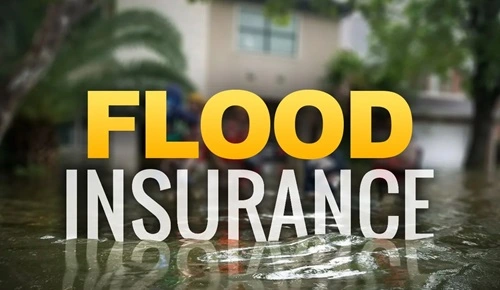Floods are one of the most destructive natural disasters, and in many parts of India, they occur regularly. When floods strike, they can cause immense damage to homes, businesses, and belongings. For this reason, flood insurance is an important financial tool to protect yourself from the unexpected costs that flooding can bring. In this article, we will explore the advantages and disadvantages of flood insurance to help you make an informed decision.

What is Flood Insurance?
Flood insurance is a special type of coverage that helps to protect your property and its contents against damage caused by flooding. Standard home insurance policies in India do not typically cover flood damage, so you need a separate flood insurance policy to be fully protected.
Flood insurance is typically offered by both government and private insurance companies. In India, flood insurance policies are often included under broader natural disaster insurance or home insurance policies, but one should carefully review the terms and conditions to ensure flood protection is included.
Advantages of Flood Insurance
1. Protection Against Financial Loss
One of the most significant advantages of having flood insurance is the protection it provides against financial loss. When a flood occurs, it can cause severe damage to your property, and repairs can be extremely costly. Flood insurance covers the cost of repairing or rebuilding your home, as well as replacing damaged personal belongings, helping to avoid a huge financial burden.
For example, if your home is located in a flood-prone area like parts of Assam or Bihar, a single flood can cause extensive damage that could take years to recover from financially. Flood insurance helps mitigate this risk by covering repair and replacement costs.
2. Peace of Mind
Owning a property in a flood-prone area can be stressful, especially during the monsoon season. Having flood insurance gives you peace of mind, knowing that even if a flood occurs, you won’t have to worry about the financial aspect of recovering from the damage. You can focus on the safety of your family without the added stress of how to manage repair expenses.
3. Covers Contents of Your Home
Flood insurance doesn’t only cover the structure of your house; it also covers your personal belongings, including furniture, electronics, appliances, and more. In the event of a flood, these items can be destroyed or severely damaged. With flood insurance, you get compensated for the replacement or repair of these items, reducing your out-of-pocket expenses.
4. Required for Mortgage Approval in High-Risk Areas
If you are buying property in a flood-prone area, banks and lending institutions may require you to have flood insurance before approving a home loan. This makes flood insurance essential for those seeking to finance homes in such regions.
5. Affordable Premiums in Some Areas
In areas with a lower risk of flooding, the premiums for flood insurance can be relatively affordable. This makes it easier for homeowners to protect their property without spending too much. The cost is usually based on the property’s location and the likelihood of flooding in that area.
Disadvantages of Flood Insurance
1. High Premiums in High-Risk Areas
One of the biggest disadvantages of flood insurance is that premiums can be quite high, especially for homes located in high-risk flood zones. In regions that are prone to frequent flooding, like parts of West Bengal or Odisha, flood insurance can become expensive. Homeowners may find it difficult to justify paying such high premiums, especially if they don’t experience frequent flooding.
2. Exclusions and Limitations
Flood insurance policies often come with exclusions and limitations. For example, not all flood insurance policies cover damage to certain items like luxury goods or outdoor structures like swimming pools. Some policies may also exclude specific types of water damage, such as sewer backups unless caused by flooding. It’s essential to thoroughly review the terms and conditions of your policy to understand what is and isn’t covered.
3. Long Claim Process
After a flood, it can take time to receive compensation through insurance. The process of filing a claim, getting an assessment, and finally receiving the payout can be long. This delay can be frustrating when you need immediate funds for repairs. Additionally, insurers may sometimes dispute the extent of the damage, further delaying the settlement process.
4. Deductibles Can Be High
In some cases, flood insurance policies come with high deductibles, meaning that you’ll have to pay a significant amount out-of-pocket before the insurance kicks in. For example, if your policy has a high deductible of ₹50,000, you will need to cover the first ₹50,000 of damage yourself. This can be burdensome for homeowners, especially in the aftermath of a disaster.
5. Limited Availability
Flood insurance may not be available everywhere or from every insurance provider. While government-backed schemes can provide some level of coverage, finding private flood insurance in certain areas may be difficult, limiting the choices for homeowners.
Conclusion
Flood insurance is a vital form of protection for those living in flood-prone areas. It offers financial security, peace of mind, and coverage for both your property and personal belongings. However, the cost of premiums, policy limitations, and claim processes are some disadvantages that must be considered. Before purchasing flood insurance, it’s essential to evaluate your risk, review policy details carefully, and compare different insurance options to find the one that best suits your needs.